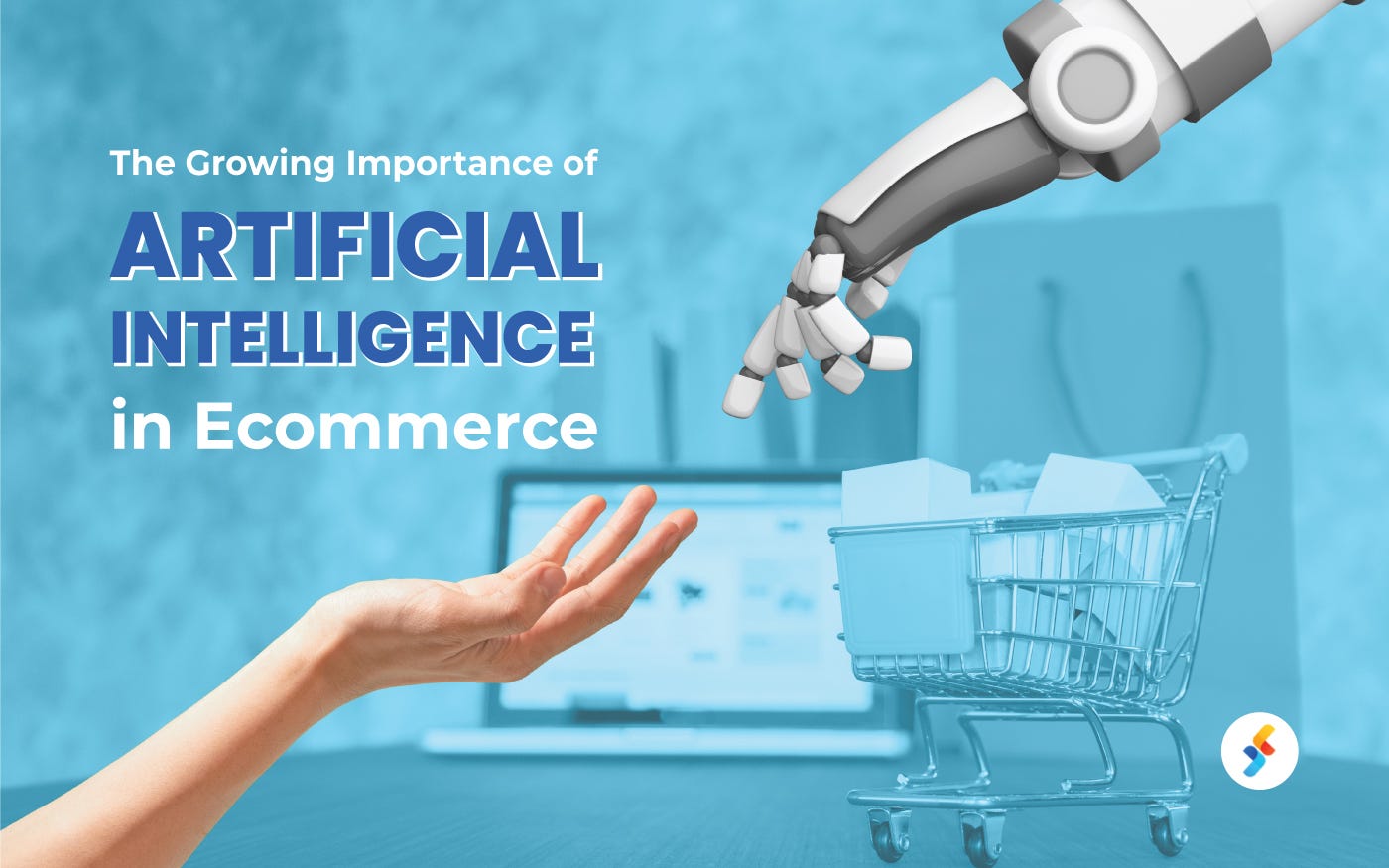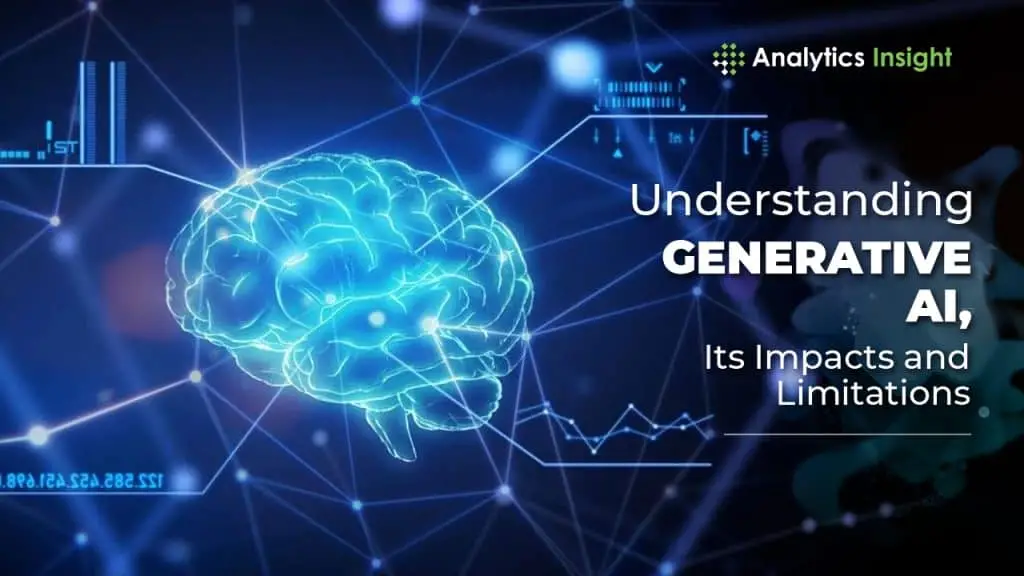
The Impact of Generative AI 🤖 on Ecommerce 🛒
Industry Pain Points

In order to see the benefits generative AI can provide to the ecommerce space, it’s first important to examine ongoing challenges and pain points in this sector.
General Pain Points
- Customer Retention and Loyalty: With an abundance of choices available, retaining customers and fostering loyalty is a significant challenge. E-commerce businesses must continuously innovate and provide exceptional experiences to keep customers returning.
- Intense Competition: The low barrier to entry in e-commerce has led to a saturated market. Standing out among competitors, especially against giants like Amazon and eBay, is increasingly difficult for smaller retailers.
- Marketplace Integration and Management: Selling across multiple platforms (like Amazon, eBay, Etsy) requires seamless integration and efficient management, posing a logistical and technical challenge.
More Specific Pain Points
Operations and Supply Chain Management
- Website Performance and Usability: Slow website loading times, poor navigation, and a cumbersome checkout process can lead to high bounce rates and abandoned carts.
- Mobile Optimization: As mobile commerce grows, e-commerce sites must be fully optimized for mobile devices, offering a seamless shopping experience across all platforms.
- Data Security and Privacy: Protecting customer data and ensuring privacy is paramount, especially in light of various global data protection regulations like GDPR.
Marketing And Sales
- Supply Chain Management: Efficiently managing inventory, handling supplier relationships, and ensuring timely delivery are critical, especially in times of disruption like the COVID-19 pandemic.
- Product Return and Refund Policies: Handling returns and refunds efficiently without incurring significant losses is a delicate balance for e-commerce businesses.
- Environmental Impact and Sustainability: Addressing the growing consumer demand for sustainable and eco-friendly practices is increasingly important.
Customer Experience and Service
- Marketing and Customer Acquisition: Effectively reaching and acquiring new customers, especially with rising marketing costs and changing algorithms on digital platforms.
- SEO and Visibility: Ensuring that products are easily discoverable in search engines requires continuous SEO efforts.
- Personalization: Providing personalized experiences is key to engagement but requires sophisticated data analysis and implementation strategies.
Intelligent Content Management
- Customer Service: Providing timely, effective customer support, especially for global customers across different time zones is a common problem for e-commerce businesses.
- Payment Processing: Offering a variety of secure and convenient payment options, while managing transaction fees, can be complex.
- Language and Cultural Barriers: For global e-commerce, overcoming language barriers and understanding cultural nuances are essential for market penetration.
The Website
- Market Analysis and Trend Prediction: Staying ahead of market trends and consumer behavior requires ongoing analysis and adaptability.
- Content Creation and Management: Constantly creating and updating product descriptions and other pieces of content can be a struggle, especially for larger ecommerce brands with big catalogues.
Many of these pain points often stem from the inability to adapt quickly to changing consumer preferences and market dynamics. Generative AI opens the door to more adaptive business solutions and can help solve issues related to personalization, customer service, return policies, marketing and customer acquisition, SEO and visibility, market analysis, trend prediction, language translation, and other issues that aren’t even mentioned.
Introduction to Generative AI

Generative AI refers to advanced models capable of creating content and making decisions based on learned data patterns. Unlike traditional AI, which operates on predefined rules, generative AI can generate new and unique outputs, offering innovative solutions to complex e-commerce challenges.
Case Studies: Success Stories of Generative AI in E-commerce
Let’s explore some companies that have already started using generative AI and the different ways in which they augment their sites and services.
1) Stitch Fix taps generative AI to write ad headlines and product descriptions
Leveraging generative AI, Stitch Fix, a popular apparel retailer, can efficiently craft ad headlines and product descriptions for Instagram and Facebook. What reportedly used to take one to two weeks has been reduced to a task that takes a few minutes for AI, with a high human approval rate of (77%) for AI-generated content.
2) J’evar uses generative AI to create product models
J'evar, an exclusively online jewelry retailer, harnesses the power of generative AI for the rapid creation of custom jewelry designs. This innovative approach enables the company's designers to bypass the traditional, time-consuming process of creating numerous mockups. With generative AI, J'evar can produce dozens of design samples in a fraction of the time, as explained by Amish Shah, the founder and CEO of J'evar.
3) Newegg uses generative AI to summarize customer reviews
Online electronics retailer Newegg has developed an internal generative AI tool to synthesize customer reviews into consolidated summaries for each product. The consolidated review is displayed atop all of the reviews. Reviews are an integral part of Newegg’s browsing experience, with the 20% of customers who spend time reading reviews, spending 40% more than their non-review reading counterparts.
4) EBay enables its marketplace sellers to use genAI to write product descriptions
eBay has introduced a generative AI tool, leveraging ChatGPT, to assist sellers in crafting comprehensive product descriptions when making a posting. This tool, already adopted by a 20% percentage of sellers, simplifies the listing process considerably. Even more recently, Ebay has released another tool that can write product descriptions entirely from the uploaded image without any additional user inputs.
5) Instacart Uses a ChatBot for Meal Planning and Meal Recommendations
Instacart recently rolled out a chatbot and ChatGPT plugin that helps grocery shoppers plan and buy meals all in one place. It factors in variables such as individual tastes, health requirements, budget, and allergies and curates new recipes and meals for customers, which they can then buy the ingredients for on the spot.
6) Virtual Try On Fashion is Coming and is Already Here for Anthropologie, Everlane, & H&M
Recently (June 2023) Google has released a new virtual try-on tool using generative AI image diffusion models. U.S. shoppers can virtually try on women’s tops from brands across Google, including Anthropologie, Everlane, H&M and LOFT. Just tap products with the “Try On” badge on Search and select the model that resonates most with you.
7) E-commerce Sites Switch to Better Chatbots powered by Gen AI models
Many e-commerce sites are upgrading their chatbots or livechat in favor of AI powered chatbots, which can proactively respond and recommend items to customers without human intervention. An example of this is Stonetooling.com which uses a chatbot with access to the stonetooling product catalog to recommend products to the site’s customers. In addition to increased conversions, the chatbot gives stonetooling access to detailed information about customer product preferences, so they can shore up their inventory of popular products and adjust their demand forecasting (if you want access to a shopping assistant for your regular online shopping you can try out https://getproduct.help/ ).
Many brands have had 24/7 operational chatbots in the past. But without the content generation and predictive capabilities of generative AI, these previous chatbots have relied heavily on human-built workflows and prebuilt responses that don’t always meet customer needs. Their limited training on limited amounts of data severely impacted their ability to interact with customers. They couldn’t solve problems in the face of unique customer experience scenarios, but now with a generative AI upgrade, they can!
When a customer service problem needs to be escalated, generative AI agents can also be used to triage more complex communications to human customer service reps, giving them all of the contextual information they need to follow up with the customer effectively, making them a handy tool to have on your site.
ROI and Performance Metrics

Companies that have invested in generative AI have experienced a rise in revenue, ranging from 3% to 15%, and a 10% to 20% increase in sales ROI, as noted by McKinsey. In the realm of e-commerce, the utilization of AI for content and image generation has been reported to simplify processes significantly. A survey highlighted that 58% of marketers using generative AI for content creation observed enhanced performance. Additionally, 48% of businesses employing generative AI in e-commerce reported improvements in the customer experience, underscoring the benefits of AI integration in raising sales conversions, content production efficiency, and overall shopper satisfaction.
Past, Present, and Future of Ecommerce

Historically, e-commerce platforms harnessed the 'wisdom of the crowd', utilizing user-generated ratings and reviews to guide potential buyers. These reviews, coupled with a straightforward search functionality and a visually engaging product display, offered insights into customer satisfaction levels. Additionally, features like "Customers also bought" provided recommendations based on historical purchasing patterns, creating upselling opportunities. This approach relied heavily on aggregating and analyzing crowdsourced data to refine the shopping experience.
The next level of wisdom is wisdom of the content. AI has helped unlock the wisdom of the content and generative AI specifically is now unlocking the wisdom of you. Wisdom of the content leverages the actual semantics of product descriptions and titles to recommend you similar products. So if you bought a product with this description, it will go search for objectively similar products to recommend to you, instead of whatever somebody else also bought in the past. This idea of semantic search has been around for a while in AI, but hasn’t been widely available for SM&Bs to integrate with their ecommerce catalog. But with the addition of generative AI and the wisdom of you, businesses now have the ability to deliver highly personalized and specific recommendations. How? By keeping track of which items customers’ bought and viewed, their preferences, and pairing generative AI text models (LLMs) with semantic search, e-commerce sites can unlock an entirely personalized form of shopping with higher conversions because all the products are tailored to the customer.
And this is only the beginning of the ways generative AI will impact the e-commerce experience. On the horizon, companies could be generating new products for customers on the fly, personalizing the entire webpage to the customer, doing dynamic real-time pricing adjustment to optimize profits, auto filling information on behalf of the user with LLMs, and providing virtual try on services. It’s safe to say that the future of generative AI in e-commerce is poised for growth and AI will continue to play a crucial role in creating personalized shopping journeys and optimizing the overall e-commerce experience.
Reality Checks
However, a discussion of the ways generative AI technology can augment ecommerce wouldn’t be complete without also acknowledging a few realities. One significant concern is the potential for generative AI systems to generate inaccurate information. This lack of reliability can be problematic, especially without thorough human verification. For e-commerce professionals, this raises the risk of misleading customers with incorrect information, leading to dissatisfaction and potential damage to the brand's reputation. Additionally, the slower processing speed of some generative AI functions compared to traditional search tools could negatively impact the user experience in an industry where speed is valued. Where does this leave retailers strategizing about how to add generative AI to their online store? Some will opt for a more conservative approach and avoid the risk user-facing generative AI applications pose, but others will jump into adding generative AI and considerably improve the user experience.
Conclusion
Generative AI stands as a transformative tool in e-commerce, offering unparalleled opportunities for business growth, customer engagement, and operational efficiency. Its strategic adoption can lead to significant competitive advantages and ROI improvements.
E-commerce businesses should consider how generative AI can be integrated into their strategies to stay ahead in the rapidly evolving digital marketplace. The potential for innovation, differentiation, and enhanced customer satisfaction is immense, making generative AI an indispensable tool in the modern e-commerce toolkit.
References
- Algolia. (n.d.). Generative AI's Impact on the E-commerce Industry.
- TechCrunch. (2023, May 31). Instacart in-app AI search tool powered by ChatGPT.
- McKinsey & Company. (n.d.). AI-powered marketing and sales reach new heights with generative AI.
- eWeek. (n.d.). AI in E-commerce.
- IBM. (n.d.). IBM Research.
- Claros Chatbots